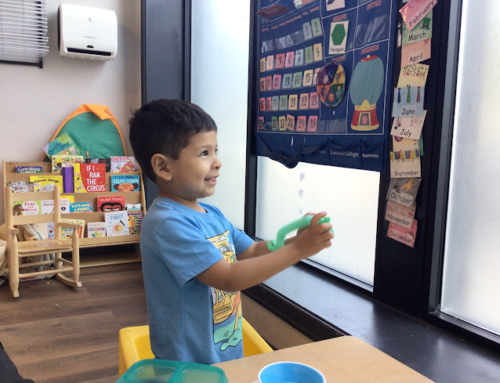You are already doing the hardest job: loving and advocating for your autistic child every single day. Sometimes with little or no support. It can be a heavy burden to carry alone, so it is important to find the resources available to lighten your load. One very important resource is the Supplemental Security Income (SSI) program, which provides monthly payments to disabled children and adults with low income and limited resources.
SSI is a needs-based program designed to provide financial assistance to individuals with disabilities who have limited income and resources. It is administered by the Social Security Administration (SSA), and eligibility is determined based on the applicant’s medical condition, income, and assets. If your child has been diagnosed with autism spectrum disorder or other developmental disabilities, they may qualify. Yet the process of applying for your unique situation can feel overwhelming considering all the forms, documentation, and confusing criteria that you need to figure out.
This guide was written, based on nearly two decades of experience, to provide you with the right guidance and a clear strategy to maneuver within the system. Remember this is a marathon and it takes time. But every form you fill out, every document you gather, is a step forward to getting the support your child is entitled to receive.
Understanding Supplemental Security Income
Supplemental Security Income is a federal program administered by the Social Security Administration (SSA). It is designed to provide financial assistance to adults and children with disabilities who have limited income and resources.
For families of autistic children, SSI can be a lifeline. These monthly payments can help cover the costs of therapies, specialized equipment, educational resources, medical care, and other essential needs that are not always covered by insurance or school districts.
The purpose of SSI is to help meet the basic needs of food, clothing, and shelter and alleviating some of the financial pressure. Securing these benefits can open doors to new opportunities for your child, providing access to interventions that transform potential into progress.
Does My Autistic Child Qualify for SSI?
This is the central question for many parents. The SSA has a specific set of criteria to determine eligibility for children. It’s not just about the diagnosis; it’s about how the condition affects your child’s ability to function in age-appropriate ways.
The process involves two main evaluations: a financial assessment and a medical assessment.
Financial Eligibility: SSI is a needs-based program. The SSA will look at your family’s income and resources to determine if you meet the financial limits. This process, called “deeming,” involves counting a portion of the parents’ income and assets as belonging to the child. It’s important to know that not all income and resources are counted. The SSA has specific rules and exclusions, so it’s crucial not to assume you won’t qualify without going through the application.
Medical Eligibility: For a child to be medically eligible for SSI, they must have a physical or mental condition that results in “marked and severe functional limitations.” This means the condition must seriously limit the child’s ability to function independently, appropriately, and effectively in an age-appropriate manner.
The SSA uses a document called the Listing of Impairments (often referred to as the “Blue Book”) to evaluate medical conditions. Autism Spectrum Disorder is listed under Section 112.10. To meet the criteria under this listing, you must provide evidence demonstrating that your child has:
- Medical documentation of both of the following:
- Deficits in social interaction.
- Deficits in verbal and nonverbal communication, along with significantly restricted, repetitive patterns of behavior, interests, or activities.
- AND Extreme limitation of one, or marked limitation of two, of the following areas of mental functioning:
- Understanding, remembering, or applying information.
- Interacting with others.
- Concentrating, persisting, or maintaining pace.
- Adapting or managing oneself.
It can be overwhelming to translate your child’s daily experiences into this clinical language. Don’t get discouraged. The key is to provide a comprehensive picture of your child’s life.
“Marked limitation” means the impairment seriously interferes with the ability to independently initiate, sustain, or complete activities. “Extreme limitation” means the impairment interferes very seriously with these abilities.
Even if your child’s condition does not precisely match the Blue Book listing, they can still be found eligible. The SSA will also consider whether their impairments are “functionally equivalent” to the listings. This involves assessing how their condition limits their functioning across six specific domains:
- Acquiring and Using Information.
- Attending and Completing Tasks.
- Interacting and Relating with Others.
- Moving About and Manipulating Objects.
- Caring for Yourself.
- Health and Physical Well-being.
Your role is to provide the evidence that paints this picture clearly for the SSA.

Step-by-Step Guide
Managing the SSI application process requires organization and persistence. Keep records and be prepared to reapply each year. Here are practical steps to help you build a strong case and manage the journey without losing heart.
Step 1: Gather Your Documentation
The foundation of a successful SSI application is thorough and compelling evidence. You are your child’s primary advocate, and your expertise on their daily life is invaluable. Start gathering documents even before you begin the application. Create a dedicated binder or digital folder to keep everything organized.
Your documentation should include:
- Medical Records: This is the cornerstone of your application. Collect all diagnostic reports, evaluation summaries, and progress notes from every specialist your child sees. This includes pediatricians, neurologists, psychologists, psychiatrists, developmental pediatricians, and any other relevant medical professionals.
- Therapy Reports: Gather reports from every therapist involved in your child’s care. This includes occupational therapists, speech-language pathologists, physical therapists, and behavioral therapists (like those providing Applied Behavior Analysis, or ABA). These reports are critical because they often detail functional limitations in practical terms. For example, an OT report might describe challenges with fine motor skills for dressing, while an SLP report can document specific deficits in social communication.
- School Records: Your child’s educational records provide a crucial window into their daily functioning. Collect Individualized Education Programs (IEPs) or Individualized Family Service Plans (IFSPs), school-based evaluations, report cards, and any communication you’ve had with teachers about your child’s challenges in the classroom. Teacher observations can be powerful evidence.
- Your Own Detailed Notes: No one knows your child better than you. Keep a journal documenting your child’s daily struggles. Note specific examples of challenges related to the six functional domains.
- Example for “Interacting with Others”: “Today at the park, three children tried to include my son in their game. He did not make eye contact, did not respond to their questions, and began lining up woodchips by himself. After five minutes, he became overwhelmed by their proximity and had a meltdown.”
- Example for “Adapting or Managing Oneself”: “This morning, I served his toast on a different plate than usual. This small change in routine led to 45 minutes of inconsolable crying and refusal to eat, making us late for his therapy appointment.”
These specific, dated anecdotes provide concrete evidence that a clinical report might miss.
Step 2: Complete the Application with Precision
You can start the SSI application online, by phone, or in person at a Social Security office. The online Child Disability Report is often the most convenient starting point. This is where you will provide detailed information about your child’s condition and how it affects them.
- Be Detailed and Specific: When filling out the forms, avoid vague statements like “my child has trouble making friends.” Instead, use the specific examples you’ve been documenting. Describe what happens when your child tries to interact with others. Explain the frequency and intensity of meltdowns. Detail the level of support they need for daily tasks like dressing, eating, or bathing.
- Focus on Limitations, Not Strengths: This can feel counterintuitive as a parent. We are used to celebrating our children’s progress and focusing on what they can do. However, for the purpose of the SSI application, you must clearly and honestly describe your child’s challenges and functional limitations. This is not about diminishing your child; it’s about accurately portraying their need for support.
- Use the SSA’s Language: Refer back to the six functional domains. As you describe your child’s challenges, try to frame them within these categories. For instance, when describing difficulty with homework, you can connect it to the domain of “Attending and Completing Tasks.”
Step 3: The Consultative Examination
In some cases, the SSA may require your child to attend a consultative examination (CE). This is a medical appointment with an independent doctor paid for by the SSA. Its purpose is to gather more information about your child’s condition.
We understand that the idea of another evaluation can be stressful. However, view it as another opportunity to provide evidence. Prepare for this appointment by writing a brief summary of your child’s key challenges for the doctor. During the exam, be ready to answer questions about your child’s daily routines, behaviors, and limitations. Your input is a vital part of the examination.
Step 4: Persevere Through the Decision (and a Potential Appeal)
After you submit your application and all required documents, you will face a waiting period. This can be one of the most difficult parts of the process. Try to be patient and remember that you have done everything in your power to present a strong case.
It is a difficult truth that many initial SSI applications are denied. If you receive a denial, it is absolutely critical that you do not give up. This is not the end of the road; it is simply another step in the process. You have the right to appeal the decision, and many families who are initially denied are ultimately approved on appeal.
The appeals process has several levels:
- Reconsideration: This is a complete review of your case by someone at the SSA who was not involved in the original decision. You can submit new evidence at this stage.
- Hearing by an Administrative Law Judge (ALJ): If the reconsideration is denied, you can request a hearing. This is a crucial step where you can speak directly to a judge and explain in your own words why your child is disabled. You can also bring witnesses, such as therapists or teachers.
- Appeals Council Review: If the ALJ denies your claim, you can ask the Appeals Council to review the decision.
- Federal Court Review: The final step is to file a lawsuit in federal court.
It is highly recommended that you consider seeking help from a disability lawyer or advocate, especially if you need to appeal. They are experts in the SSA’s rules and know the complexities of the appeals process. Most work on a contingency basis, meaning they only get paid if you win your case.
Your Support System
Building a strong support system is essential for your own well-being and your ability to persevere.
- Connect with Other Parents: Find local or online support groups for parents of autistic children. Sharing experiences, frustrations, and successes with others who truly understand can be incredibly validating. Parents are often the best source of practical advice on navigating local resources and the SSI system.
- Lean on Your Professional Team: Your child’s therapists and doctors are your partners. Keep them informed about your SSI application and ask them to provide detailed, descriptive reports.
- Practice Self-Compassion: It is okay to feel tired, frustrated, or discouraged. Acknowledge these feelings without judgment. Remember to take breaks and do things that replenish your own energy. Advocating for your child is demanding work, and you need to care for yourself to be an effective advocate.
Securing SSI benefits is a testament to your unwavering commitment to your child’s future. Each piece of paper represents your dedication. Each phone call is a reflection of your advocacy. This process is more than just paperwork; it is an act of love.
Keep moving forward, one step at a time. Hope is not just a feeling; it is a strategy, and you are already putting it into action. By persevering, you are unlocking a resource that can profoundly impact your child’s opportunities for growth, learning, and joy.

Blue Bird Day—the first therapeutic preschool and kindergarten program in the nation—fosters socialization, sensory regulation, and pre-academic learning in children ages 2-7 years. Our compassionate therapists practice a relationship-based and family-centered approach, provide parent training, and collaborate on goals and individualized intensive treatment plans for your child.
We believe in a collaborative and multi-disciplinary team approach to therapy. A team of occupational therapists, speech-language pathologists, dietitians, developmental therapists, behavioral therapists, physical therapists, and therapeutic assistants are created for each child to ensure child and family are fully supported and the best possible results are achieved.
Options for individualized, group and virtual therapy sessions are available as well.
Want to learn more or you have a specific question? Feel free to connect with us here!



